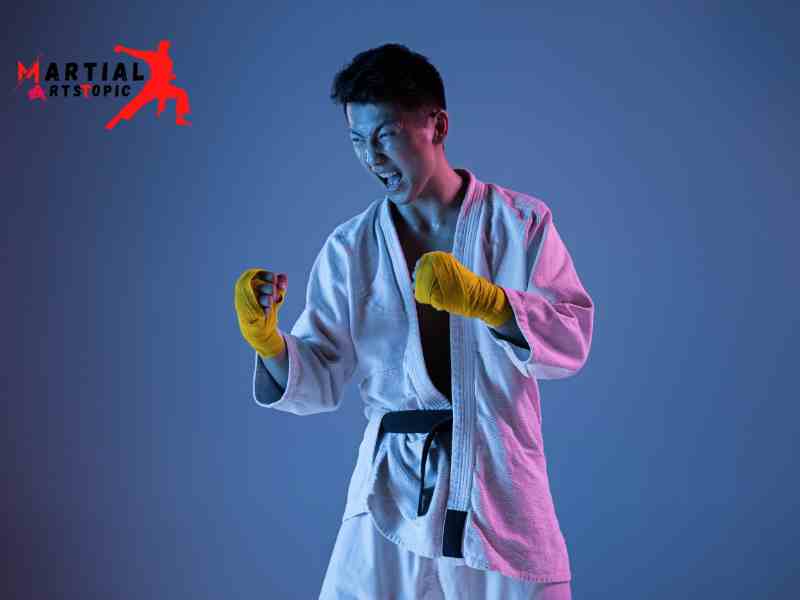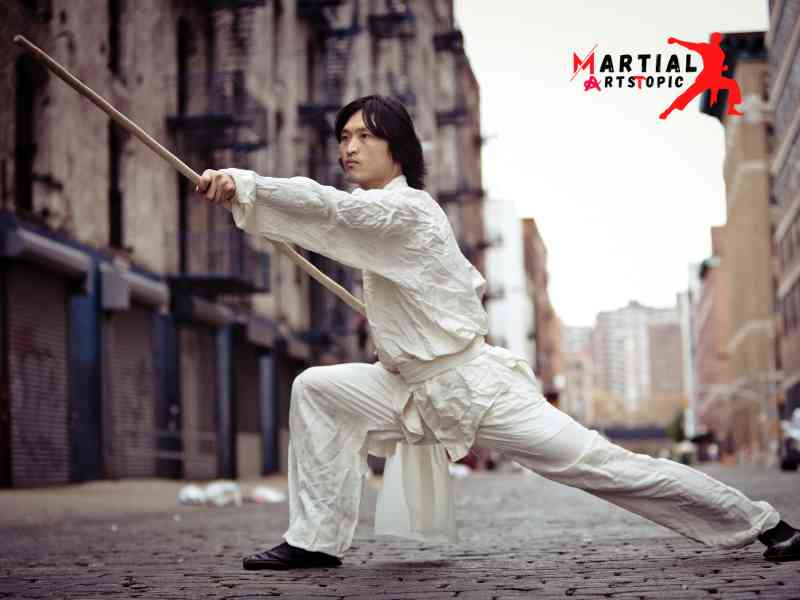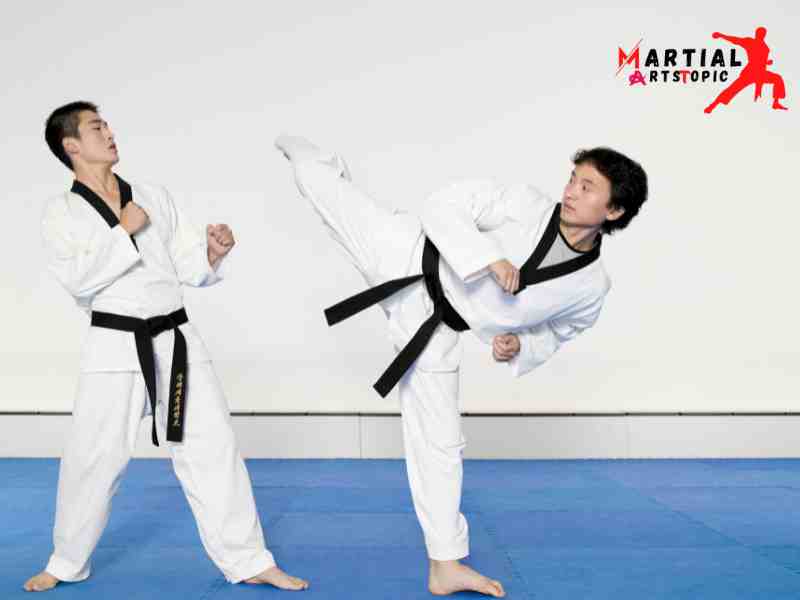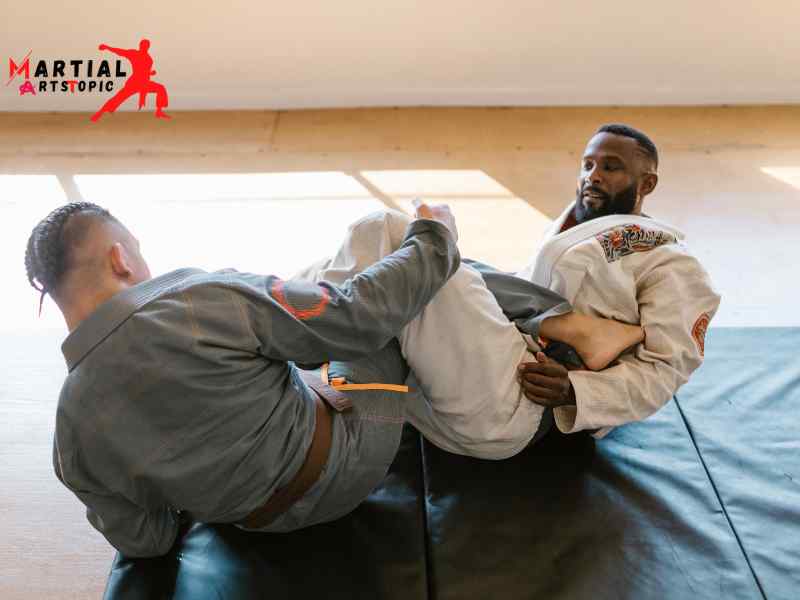
A Beginner’s Guide to Learning Korean Martial Arts
Welcome to the Beginner’s Guide to Learning Korean Martial Arts! Whether you’re a complete novice or have some experience, this guide will help you embark on a journey to master the art of Korean Martial Arts. Known for its rich history and unique techniques, Korean Martial Arts offers a holistic approach to self-defense, discipline, and physical fitness. In this guide, we will explore the different styles of Korean Martial Arts, such as Taekwondo, Hapkido, and Kuk Sool Won, and provide you with useful tips and resources to get started on your path to becoming a proficient practitioner. So, let’s dive into the world of Korean Martial Arts and unlock your true potential!
What is Korean Martial Arts?
Korean martial arts, also known as “muye” or “martial arts of Korea,” encompass a diverse range of traditional fighting styles and techniques. These arts have a rich history deeply rooted in Korean culture and have gained international recognition for their effectiveness and discipline. From the powerful kicks of Taekwondo to the graceful and flowing movements of Hapkido, Korean martial arts offer a holistic approach to combat and self-defense. The philosophy behind these arts emphasizes mental and physical discipline, respect, and self-improvement. Practicing Korean martial arts not only enhances one’s physical strength and agility but also cultivates mental fortitude and inner peace. Whether you’re interested in the striking techniques of Taekwondo, the joint locks and throws of Hapkido, or the weaponry skills of Kumdo, Korean martial arts offer a comprehensive and rewarding journey for practitioners of all ages and skill levels.
History of Korean Martial Arts: Ancient origins and influences
The History of Korean Martial Arts: Ancient Origins and Influences Korean Martial Arts, also known as “Muye Dobo” in Korean, has a rich and ancient history that dates back thousands of years. These martial arts have not only been an integral part of Korean culture, but they have also played a significant role in shaping the country’s identity and history. The origins and influences of Korean Martial Arts, shedding light on their fascinating journey through time.
Ancient Origins
The roots of Korean Martial Arts can be traced back to the ancient kingdom of Goguryeo, which existed from 37 BCE to 668 CE. During this period, someone primarily practiced martial arts for self-defense and military training purposes. We believe that the earliest form of Korean Martial Arts, called “Sib palki,” emerged during this time. Sib palki focused on the use of various weapons such as swords, spears, and bows.
Influences from China

Throughout its history, Korea has had close cultural and historical ties with China. These connections resulted in the exchange of various aspects of Chinese culture, including martial arts. During the Three Kingdoms period (57 Chinese martial arts styles heavily influenced BCE–668 CE), Korean Martial Arts such as Kung Fu. This influence is obvious in the forms and techniques used in Korean Martial Arts.
The Korean Peninsula also experienced the influence of the Shaolin Temple, one of the most famous centers for martial arts in China. Buddhist monks from the Shaolin Temple traveled to Korea, bringing with them their knowledge of martial arts. This exchange of techniques and philosophies enriched the development of Korean Martial Arts.
Distinctive Korean Styles
Korean Martial Arts developed into various distinctive styles, each with its own unique characteristics and techniques. Taekkyeon, for example, is a traditional Korean martial art that is known for its fluid and graceful movements. It emphasizes agility, footwork, and the use of kicks. Taekkyeon is one of the oldest surviving martial arts in Korea.
Another renowned Korean martial art is Taekwondo, which gained global recognition and popularity. Taekwondo focuses on high, fast kicks and dynamic movements. We know it for its emphasis on discipline, respect, and self-control.
Hapkido is a Korean martial art that combines striking techniques, joint locks, and throws. It emphasizes the use of an opponent’s energy against them and is often referred to as the “way of coordination and internal power.”
Modern Era and Global Influence
Korean Martial Arts have continued to develop and adapt to changing times. They have also gained international recognition and have become popular not only in Korea but also around the world. Taekwondo, in particular, has become an Olympic sport, further cementing its status as a global martial art.
We can see the influence of Korean Martial Arts in various aspects of popular culture, including movies, television shows, and even video games. The dynamic and visually striking techniques of Korean Martial Arts have captivated audiences worldwide, further spreading their influence.
The Role of Korean Martial Arts in Self-Defense
The Role of Korean Martial Art in Self-Defense Korean Martial Arts has a rich history and a deep-rooted tradition that goes back centuries. From the ancient art of Taekkyeon to the widely popular Taekwondo, these martial arts have not only been practiced as a form of physical exercise but have also played a significant role in self-defense techniques. The importance of Korean Martial Arts in self-defense and how they can empower individuals to protect themselves in today’s world.
Korean Martial Arts, such as Taekwondo, Hapkido, and Kumdo, focus on a combination of striking, grappling, and self-defense techniques. These arts emphasize discipline, respect, and mental preparedness, in addition to physical strength and skill. By mastering the techniques taught in these martial arts, individuals can develop the necessary tools and confidence to defend themselves effectively.
One of the key aspects of Korean Martial Art is their emphasis on self-control and self-discipline. Practitioners are taught to remain calm and composed even in high-pressure situations. This mental fortitude and discipline enable individuals to assess threats accurately and respond effectively, without succumbing to panic or fear. By training in Korean Martial Arts, individuals develop the ability to stay focused and make split-second decisions, which can be crucial in self-defense situations.
In addition to mental preparedness, Korean Martial Art also provide individuals with a wide range of physical techniques that can be used for self-defense. Taekwondo, for example, is known for its dynamic kicks and strikes. These techniques are not only effective in disabling an attacker, but also help individuals maintain a safe distance from their opponents. Hapkido, on the other hand, focuses on joint locks, throws, and pressure points, providing practitioners with the skills to immobilize an attacker quickly.
Korean Martial Art instill a sense of confidence and empowerment in individuals. By mastering the techniques and overcoming challenges during training, practitioners develop a belief in their ability to protect themselves. This confidence radiates outward, deterring potential attackers and reducing the likelihood of becoming a target in the first place. The mental and physical strength gained through Korean Martial Arts training can give individuals the courage to stand up for themselves and others when faced with dangerous situations.
In today’s world, where personal safety is a concern for many, learning self-defense techniques is crucial. Korean Martial Art provide a holistic approach to self-defense, combining mental and physical strength with discipline and respect. By training in these martial arts, individuals not only equip themselves with practical skills but also develop a mindset that can help them navigate potentially dangerous situations.
The Different Styles of Korean Martial Arts

Korean martial arts have a rich history and are known for their diverse styles and techniques. From the ancient art of Taekwondo to the powerful Hapkido and the graceful movements of Kukkiwon, Korean martial art offer a unique and challenging experience for practitioners of all levels. The various styles of Korean martial arts and discover what makes each one special.
- Taekwondo: This is perhaps the most well-known Korean martial art. Taekwondo focuses on high and fast kicks, jump kicks, and spinning kicks. It emphasizes speed, agility, and flexibility. With its origins dating back over 2,000 years, Taekwondo has become a global phenomenon and an official Olympic sport.
- Hapkido: Often referred to as the “way of coordinated power,” Hapkido is a comprehensive martial art that combines strikes, joint locks, throws, and pressure points. Hapkido practitioners learn to redirect an opponent’s energy and use it against them. This style emphasizes fluid movements and the efficient use of an opponent’s force.
- Kukkiwon: Kukkiwon is the official governing body for Taekwondo and is responsible for promoting and developing this martial art worldwide. Known for its dynamic and acrobatic kicks, Kukkiwon focuses on precision, technique, and discipline. It offers a structured belt system that allows practitioners to progress through different levels of expertise.
- Tang Soo Do: Tang Soo Do is a Korean martial art that has roots in both Chinese and Korean martial arts. It combines striking techniques, self-defense, and forms. Tang Soo Do emphasizes discipline, respect, and personal growth. Practitioners learn a variety of techniques, including punches, kicks, and throws.
- Gumdo: Also known as Korean swordsmanship, Gumdo focuses on the art of sword fighting. Practitioners learn various sword techniques, forms, and patterns. Gumdo emphasizes mental focus, precision, and discipline. It provides a unique opportunity to explore the traditional weapon-based martial arts of Korea.
- Kuk Sool Won: Kuk Sool Won is a comprehensive martial art that incorporates striking, grappling, joint locks, throws, and weapons training. It emphasizes self-defense and practical application. Kuk Sool Won encompasses a wide range of techniques, including kicks, punches, and pressure point strikes.
- Ssireum: Ssireum is a traditional Korean wrestling style that dates back centuries. It involves two opponents trying to throw each other off balance and onto the ground using various techniques. Ssireum requires strength, agility, and strategy. It is not only a physical sport but also a cultural tradition that is deeply rooted in Korean history.
Benefits of Practicing Korean Martial Arts
Benefits of Practicing Korean Martial Arts Are you looking for a way to improve your fitness levels while learning self-defense techniques? Look no further than Korean Martial Art. With a rich history and a variety of styles to choose from, practicing Korean Martial Arts can offer a range of physical, mental, and emotional benefits. The many advantages of training in Korean Martial Arts.
- Physical Fitness: One of the most significant benefits of practicing Korean Martial Arts is the improvement in physical fitness. Whether you choose Taekwondo, Hapkido, or any other Korean Martial Art, you can expect to engage in rigorous training sessions that include cardiovascular exercises, strength training, flexibility exercises, and more. This full-body workout will lead to increased stamina, improved coordination, enhanced agility, and overall better physical health.
- Self-Defense Skills: Another advantage of practicing Korean Martial Arts is the development of self-defense skills. With a focus on practical techniques and real-life scenarios, Korean Martial Arts can equip you with effective self-defense techniques to protect yourself in dangerous situations. By learning how to strike, block, and grapple, you will gain confidence in your ability to defend yourself and others if needed.
- Mental Discipline: Korean Martial Arts also emphasize mental discipline and focus. Through repetitive movements, forms, and patterns, it encouraged practitionersit encouraged practitioners to develop mental strength, concentration, and mindfulness. This mental discipline can improve your ability to concentrate on tasks, manage stress, and stay calm in challenging situations.
- Character Development: Korean Martial Arts place a strong emphasis on character development and values such as respect, humility, perseverance, and self-control. Through regular training, practitioners learn to embody these qualities both inside and outside the training hall, leading to personal growth and positive changes in behavior.
- Increased Confidence: As you progress in your training and achieve milestones such as belt promotions or competition victories, your confidence will naturally increase. This newfound confidence will not only benefit you in martial arts but also in other areas of life, such as work, relationships, and personal goals.
- Social Interaction: Korean Martial Arts provide a supportive and inclusive community where you can meet like-minded individuals who share your passion for martial arts. Training together, sparring, and participating in tournaments foster camaraderie and create lasting friendships. This sense of community can provide a strong support system and make your martial arts journey even more enjoyable.
- Stress Relief: Training in Korean Martial Arts can be an excellent way to relieve stress and improve overall mental well-being. The physical exertion, mental focus, and the opportunity to release pent-up energy through striking and kicking can help reduce anxiety, promote relaxation, and improve your mood.
The Basics: Essential Techniques in Korean Martial Arts
Korean martial arts have a rich history and are known for their discipline, precision, and effectiveness. Whether you are a beginner or an experienced practitioner, it is crucial to master the basics of Korean martial arts to build a solid foundation for your training. The essential techniques that every practitioner should focus on celling in Korean martial arts.
- Taekwondo: Tae Kwon Do is perhaps the most well-known Korean martial art. It emphasizes high and fast kicks, as well as powerful strikes. The basic techniques you should master in Tae Kwon Do include front kicks, side kicks, roundhouse kicks, punches, and blocks. These techniques are not only effective for self-defense but also help improve flexibility, strength, and overall fitness.
- Hapkido: Hapkido is a Korean martial art that focuses on self-defense techniques. It incorporates joint locks, throws, and pressure point strikes to neutralize an opponent’s attack. In Hapkido, it is essential to control techniques such as wrist locks, arm bars, leg sweeps, and throws. These techniques require precise timing and fluid movements, making them effective in real-life situations.
- Taekkyon: Taekkyon is a traditional Korean martial art that combines both physical and mental training. It emphasizes fluid and rhythmic movements, footwork, and evasion techniques. Mastering the basic techniques of Taekkyon, such as stepping, kicking, blocking, and dodging, will enhance your balance, coordination, and agility. Moreover, Taekkyon promotes mindfulness, discipline, and self-awareness.
- Gumdo: Gumdo, also known as Korean swordsmanship, is a martial art that focuses on the use of the traditional Korean sword, known as the “geom.” Mastering the basic techniques in Gumdo involves learning various sword strikes, blocks, and footwork. These techniques require precise control, concentration, and coordination. Practicing Gumdo not only enhances your physical abilities but also cultivates mental clarity and focus.
- Ssireum: Ssireum is a traditional Korean form of wrestling that emphasizes throwing and grappling techniques. Mastering the basic techniques of Ssireum involves learning takedowns, throws, and pins. These techniques require strength, balance, and strategy. Practicing Ssireum not only improves your physical strength but also teaches you patience, resilience, and respect.
Korean Martial Arts Training
In a world filled with various forms of martial arts, Korean martial arts have established their unique place. Combining discipline, technique, and a deep-rooted cultural heritage, Korean martial arts offer individuals an opportunity to delve into a rich tradition while simultaneously nurturing physical and mental well-being. This comprehensive guide will explore the essence of Korean martial arts training, its benefits, and the top techniques that make it truly exceptional.
Understanding Korean Martial Arts

Korean martial arts, also known as “Muye ” or “muyed obotongji,” encompass a wide range of traditional fighting techniques originating from the Korean peninsula. They have refined these practicesThey have refined these practicesThey have refined these practicesThey have refined these practices over centuries, with each discipline having its own distinct style and philosophy. Some renowned Korean martial arts include Taekwondo, Hapkido, Kumdo, and Tang Soo Do.
The Benefits of Korean Martial Arts Training
- Physical Fitness: Korean martial arts training goes beyond ordinary workout routines. It enhances flexibility, strength, endurance, and overall physical fitness. Regular practice can lead to weight loss, improved cardiovascular health, and increased muscle tone.
- Self-Defense: Korean martial arts focus on practical self-defense techniques that can be applied in real-life situations. By learning these skills, individuals gain confidence, awareness, and the ability to protect themselves and others.
- Mental Discipline: Korean martial arts training emphasizes mental fortitude, self-control, and discipline. It teaches practitioners to cultivate focus, concentration, and resilience, which can be applied to all aspects of life.
- Stress Relief: Engaging in Korean martial arts allows individuals to release stress and tension while promoting mental clarity and emotional well-being. The rhythmic movements and mindfulness involved in training provide a meditative experience that helps manage stress.
- Cultural Connection: Korean martial arts training provides an opportunity to connect with Korean culture and its rich history. By immersing oneself in these practices, individuals gain a deeper understanding of Korean traditions, values, and philosophies.
Top Techniques in Korean Martial Arts
- Taekwondo: Characterized by its dynamic kicking techniques, Taekwondo emphasizes speed, agility, and precision. Practitioners learn an array of powerful kicks, punches, and blocks while developing mental focus and self-confidence.
- Hapkido: Known as the “way of harmony,” Hapkido focuses on joint locks, pressure points, and throws. It emphasizes redirecting an opponent’s force, using their energy against them. Hapkido teaches practitioners to defend themselves against larger opponents through leverage and technique.
- Kumdo: Kumdo, the Korean equivalent of the Japanese Kendo, is the art of swordsmanship. Practitioners learn the art of wielding a bamboo sword (called a “jukdo”) with precision, balance, and discipline. Kumdo cultivates mental focus, agility, and strategic thinking.
- Tang Soo Do: Incorporating techniques from Chinese martial arts, Tang Soo Do emphasizes powerful strikes, kicks, and blocks. It focuses on improving physical strength, flexibility, and mental resilience. Tang Soo Do practitioners also learn forms (poomsae) that enhance their discipline and technique.
The Evolution of Korean Martial Arts in the Modern World

Korean Martial Arts, also known as KMA, has a rich and fascinating history that dates back thousands of years. Over the centuries, these ancient fighting techniques have strengthened and adapted to the changing times, becoming a part of the modern world. The journey of Korean Martial Arts and how they have transformed to meet the needs and challenges of today.
Korean Martial Arts have their roots in the ancient Korean kingdom of Goguryeo, which existed from 37 BCE to 668 CE. One of the earliest recorded forms of Korean Martial Arts is called Taekkyeon, a graceful and fluid martial art that emphasizes kicks, strikes, and throws. Taekkyeon was not only used for self-defense but also as a way to develop discipline, physical fitness, and mental strength.
As Korea went through various dynasties and periods of unrest, the practice of martial arts continued to develop. During the Joseon Dynasty (1392-1897), martial arts were primarily used for military training. This resulted in the development of styles like Hapkido and Yudo, which focused on practical self-defense techniques and grappling techniques, respectively.
However, it was during the Japanese occupation of Korea in the early 20th century that Korean Martial Arts faced significant challenges. The Japanese government sought to suppress Korean culture and banned the practice of traditional martial arts. Despite this adversity, Korean Martial Arts practitioners secretly continued to train and develop their skills, laying the foundation for the resurgence of KMA after Korea’s liberation in 1945.
Korean Martial Arts experienced a renaissance. The Korean government recognized the cultural significance and value of KMA and actively promoted its practice. This led to the establishment of various martial arts schools and organizations, such as the Korea Taekwondo Association and the World Taekwondo Federation. Taekwondo, with its dynamic kicks and powerful strikes, became the most well-known and widely practiced Korean Martial Art around the world.
In recent years, Korean Martial Arts have gained even more popularity and recognition globally. Taekwondo has become an Olympic sport, further solidifying its status as a world-class martial art. Other Korean Martial Arts, such as Hapkido and Kuk Sool Won, have also gained international recognition and have practitioners in countries all over the world.
The modern world has also seen the fusion of traditional Korean Martial Arts with other combat styles, resulting in the emergence of hybrid martial arts. Mixed martial arts (MMA) has become increasingly popular, with athletes incorporating techniques from various martial arts disciplines, including Korean Martial Arts, into their fighting styles.
Despite these changes and adaptations, the core principles of Korean Martial Arts remain intact. Korean Martial Arts emphasize discipline, respect, and self-control, instilling not only physical strength but also mental fortitude in its practitioners. The practice of KMA continues to be a way for individuals to improve their physical fitness, develop self-confidence, and cultivate a sense of community.
Korean Martial Arts Bell System and Rank Progression
Korean Martial Arts Bell System and Rank Progression: Honoring Tradition and Promoting Mastery When it comes to Korean martial arts, there’s much more than just physical combat. The discipline, technique, and philosophy behind these traditional practices have captivated individuals worldwide. One significant aspect of Korean martial arts is the bell system and rank progression, which plays a vital role in honoring tradition and promoting mastery.
The bell system in Korean martial arts is a symbolic representation of a practitioner’s progress and growth. It serves as a visual reminder of the journey one undertakes in mastering their chosen art form. Each bell represents a different level of expertise, and as a practitioner advances, we awarded them a new bell to signify their accomplishment.
The bell system encourages practitioners to strive for excellence and continuous improvement. It instills a sense of discipline and dedication, as one must invest time, effort, and focus to progress through the ranks. It also fosters a sense of camaraderie among practitioners, as they support and motivate one another in their individual and collective pursuits.
It closely tied rank progression to the bell system in Korean martial arts. It is a hierarchical structure that acknowledges a practitioner’s proficiency and experience. As practitioners advance in rank, they gain access to more advanced techniques, training methods, and responsibilities within their martial arts community.
The rank progression system is designed to ensure that practitioners develop a solid foundation before moving on to more complex skills. It emphasizes the importance of mastering the basics as they form the building blocks for advanced techniques. This approach not only enhances a practitioner’s physical abilities, but also cultivates mental resilience, patience, and perseverance.
To progress through the ranks, practitioners must demonstrate their proficiency through rigorous testing and evaluation. These assessments often include practical demonstrations of techniques, forms, sparring, and sometimes even written exams. The process encourages practitioners to refine their skills, deepen their understanding of their art, and develop a well-rounded martial arts practice.
Beyond the physical aspects, the bell system and rank progression in Korean martial arts also uphold the values and philosophy of these ancient disciplines. Respect, humility, and integrity are integral components of the martial arts journey. By adhering to these principles, practitioners not only become skilled fighters but also honorable individuals who embody the essence of their art form.
The bell system and rank progression in Korean martial arts are not just about achieving higher status; they are about personal growth, self-discovery, and the pursuit of excellence. They provide a roadmap for practitioners to continually challenge themselves, set goals, and overcome obstacles on their path to mastery.
